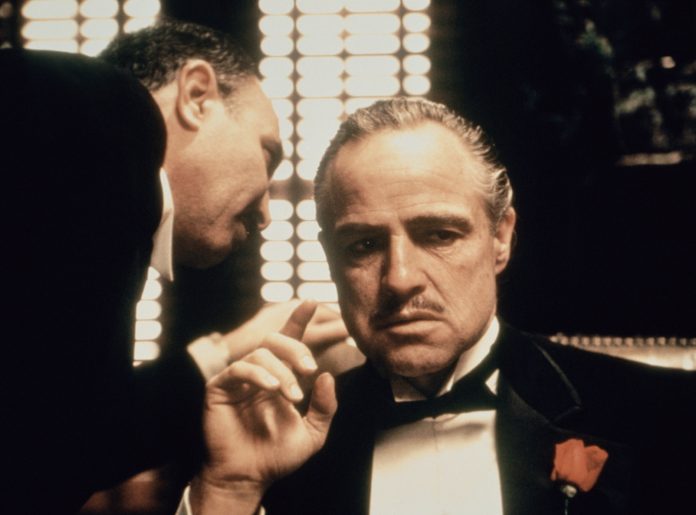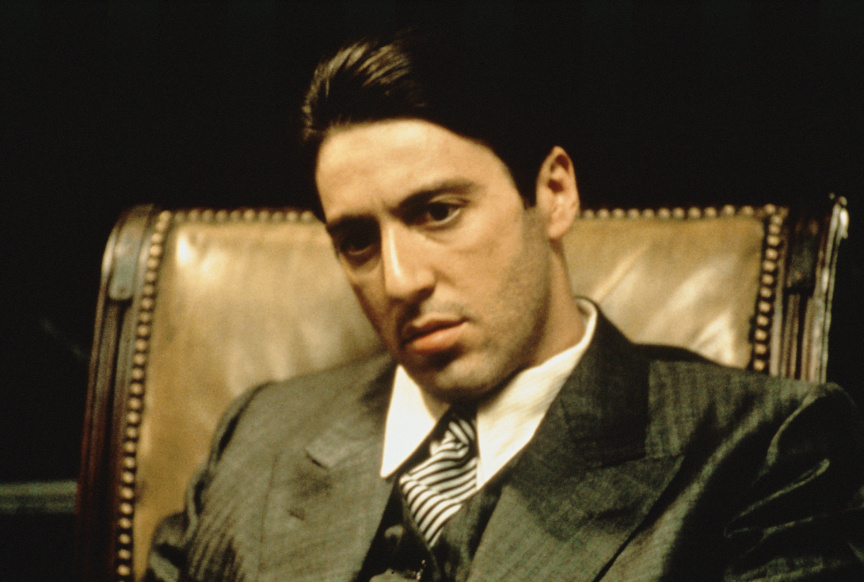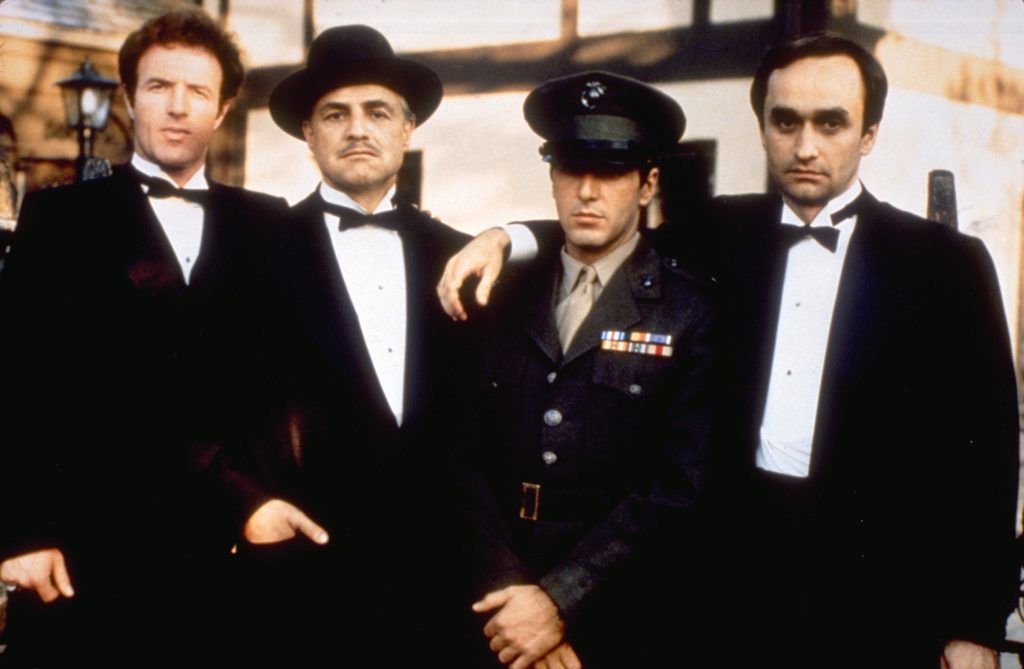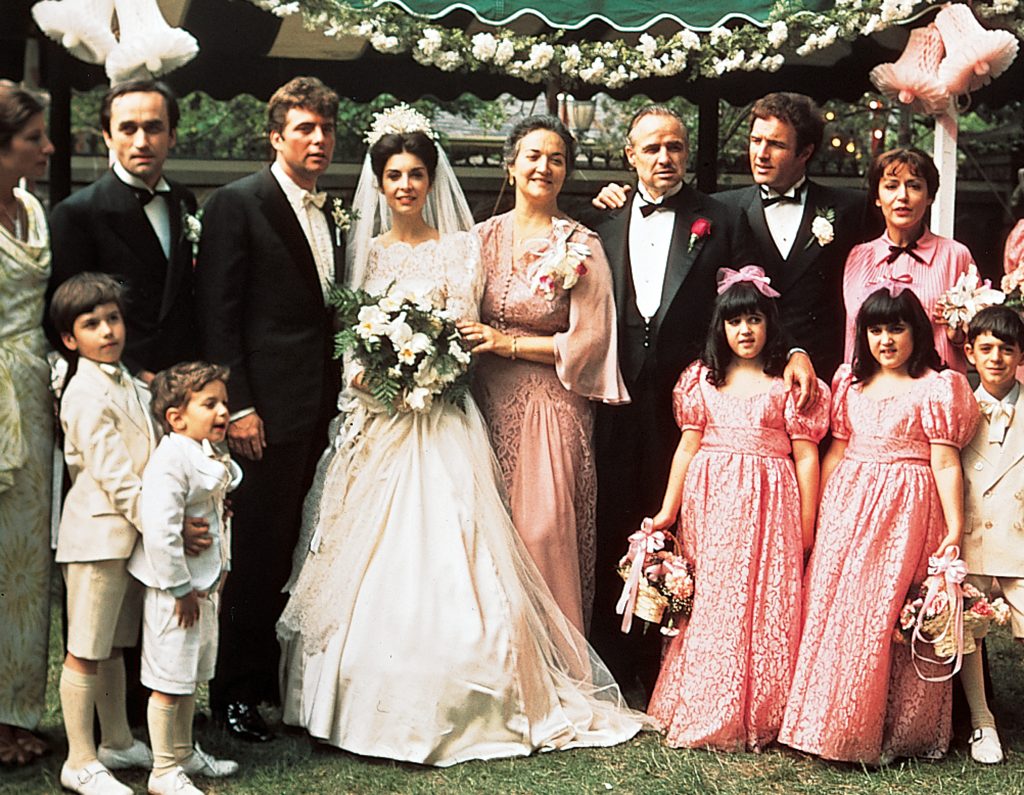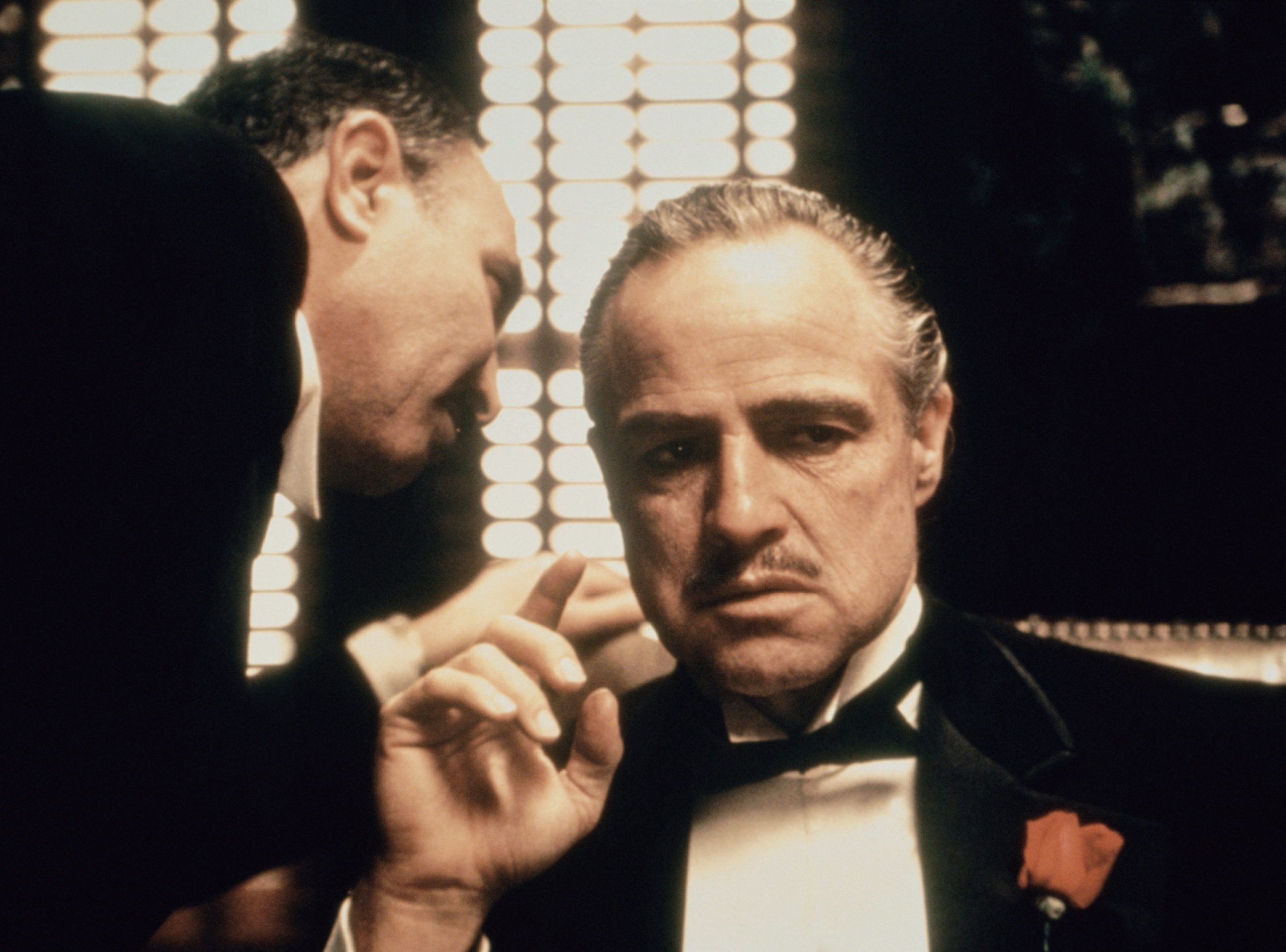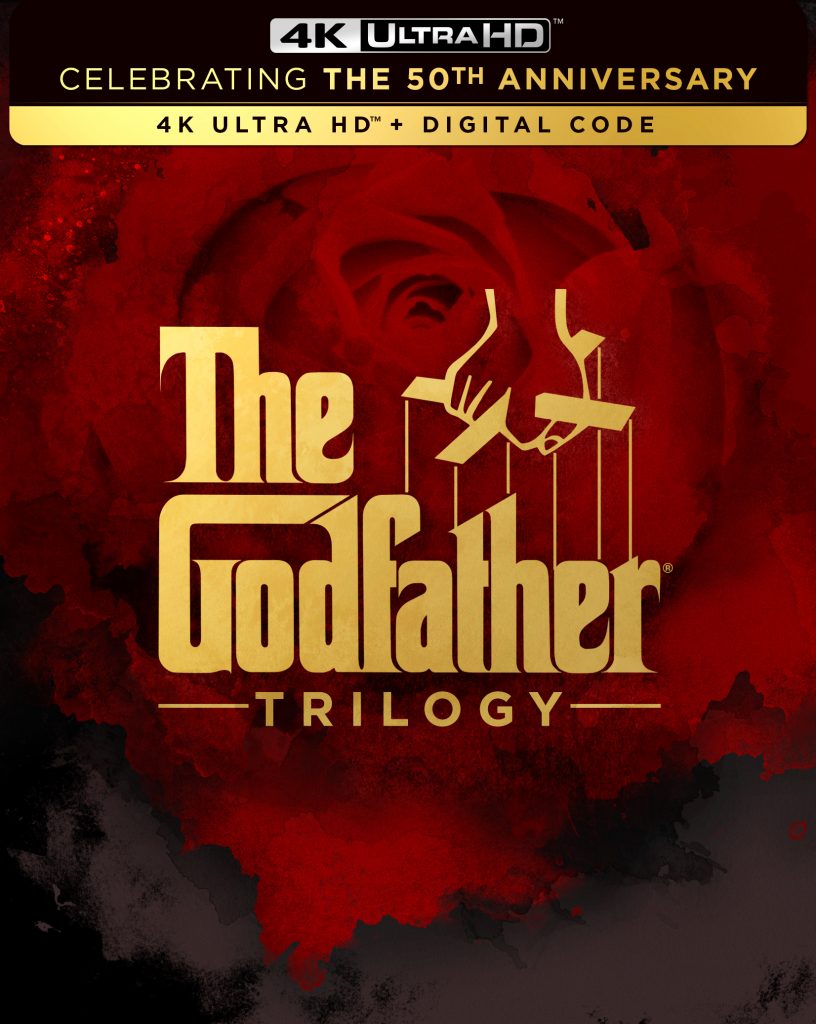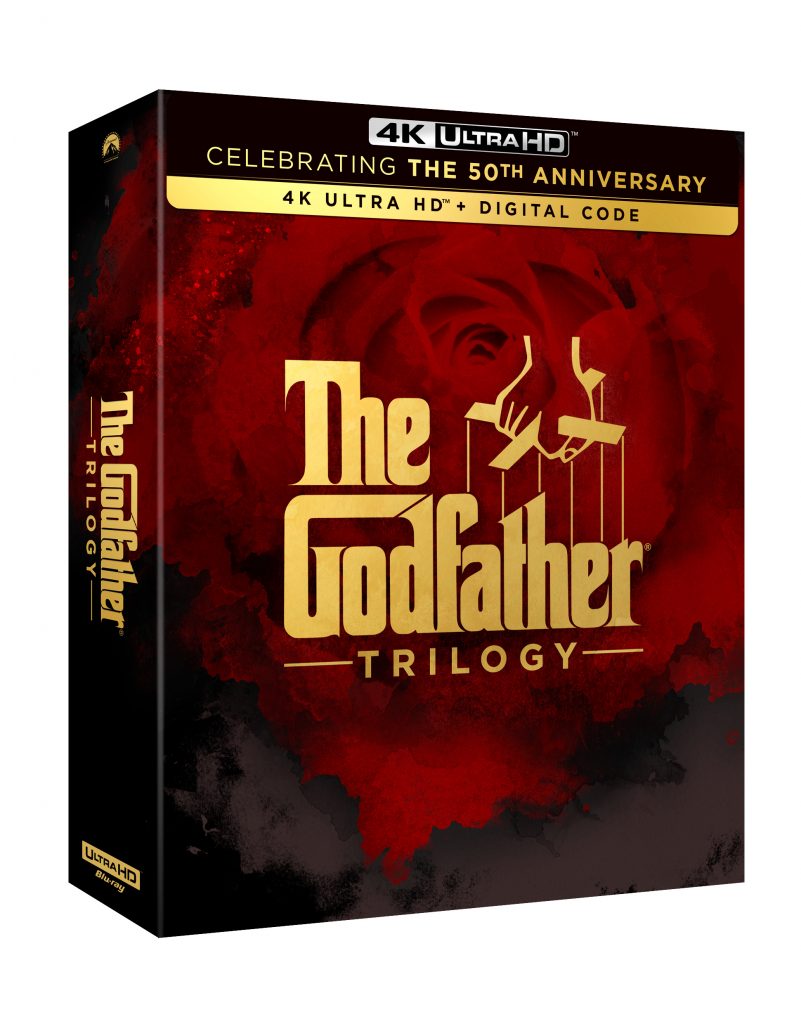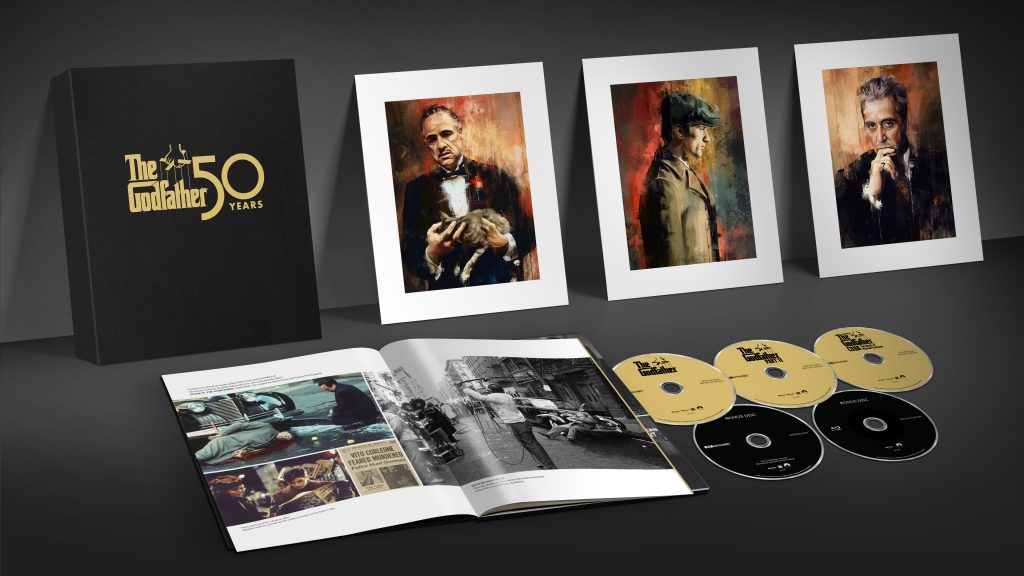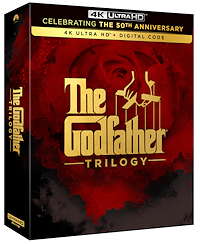
The famous “horse-head-in-the-bed” scene occurs early in these proceedings, as Hollywood producer Jack Woltz (John Marley) is made an offer that he cannot “refuse” and casts Johnny in a major film. Drug dealer Virgil “The Turk” Sollozzo (Al Lettieri), an ally of Don Phillip Tattaglia (Victor Rendina) tries to get Vito to fund his heroin distribution network but when the Godfather rejects Sollozzo’s offer, he is gunned down by Bruno Tattaglia (Tony Giorgio) yet survives in a permanently weakened condition. The Corleones regroup and Sonny has a brief turn as Don and takes out Bruno, while Michael does in Sollozzo and crooked police Captain Mark McCluskey (Sterling Hayden). For his own protection, Michael abruptly leaves for Sicily while Fredo travels to Las Vegas where he becomes the stooge of gambling magnate and Corleone casino partner, Moe Greene (Alex Rocco).
The consequences of the war between the five families that control the New York crime scene have been devastating and after Sonny is assassinated, Don Corleone calls a meeting of the other Dons led by Emilio Barzini (Richard Conte). Michael has returned home and marries Kay. Eventually he replaces his father as Don and in a fast-paced choreography of controlled vengeance, there is a wholesale changing of the guard.
This 1972 multiple-Oscar winner (Best Picture, Best Actor, Best Adapted Script) opened the floodgates for other crime sagas like Once Upon a Time in America and Goodfellas. In terms of breadth and depth, The Godfather is like no other American film, then or now.
After a brief prologue that chronicles a young Vito Corleone’s 1901 transatlantic passage from Sicily to America, the second installment in The Godfather trilogy returns viewers to 1958 as young Anthony Vito Corleone, son of Michael (Al Pacino) and Kay (Diane Keaton), receives his first communion in Lake Tahoe, Nevada. These stories of past and present will intertwine several times during The Godfather: Part II and fill in the Don’s backstory and rise to power. With the old Don gone, the Corleone family of the 1950s has shifted its business from New York to Las Vegas and, in so doing, must make new friends and eliminate enemies all over again. The challenge is dealing with old NYC contacts like Frankie Pentangeli (Michael V. Gazzo) and Michael’s off-kilter brother Fredo (John Cazale). A wake-up call occurs when the Corleone family house comes under attack and consigliore Tom Hagen (Robert Duvall) is put in charge.
While Michael tries to reestablish his life, as he and his family knew it, everything changes, and the armed camp approach is unappealing. Switching back to the early 20th century, young Vito (Robert DeNiro) begins his ascent to Godfather. Returning to the present, Michael connects with Hyman Roth (Lee Strasberg), the kingpin of the gambling world, and suspects him of being responsible for the attack on his family. The scene shifts to Havana, Cuba where Michael meets Roth again as he contemplates a business deal there. When Michael becomes concerned about the stability of the government, he beats a hasty retreat to the States, and, as President Fulgencio Batista (Tito Alba) abdicates, chaos overtakes the island.
Back to the past, Vito is being “squeezed” by local crook Don Fanucci (Gastone Moschin). He meets with young Clemenza (Bruno Kirby) and Tessio (John Aprea) in an effort to get out from under Fanucci’s thumb and ends up shooting the older man to death during a festival. The young Don is now moving up the ranks and opens the Genco Pura Olive Oil Company as a front for his underworld business.
Returning to the 1950s, an ongoing Senate investigation of the Corleone crime syndicate gets some damning evidence from one of the Don’s “buttonmen,” Willi Cicci (Joe Spinell). On the stand, Michael begins to take considerable heat from the Senators while waiting in the wings to testify against him is Frankie Pentangeli. The Godfather: Part II still has some plot twists in store as the saga of this crime family moves inexorably toward another stunning conclusion.
This second collaboration between Francis Ford Coppola and Mario Puzo is just as successful as the original Godfather film and garnered six Oscars, including Best Picture, Best Director, and Best Adapted Screenplay. Once again, we get the fabulous synergy between Nino Rota’s luxurious score and Gordon Willis’s cinematography that smartly blends the past with the present (at least for the Corleone family).
With Mario Puzo’s The Godfather, Coda: The Death of Michael Corleone, Francis Ford Coppola returns to the film, 30 years later, that in the entire Godfather saga, were it a character, would probably be Fredo. Although it received relatively good reviews upon its release, Part III did not receive the same sorts of glowing reviews of Parts I & II, and the film was never intended to be part of a trilogy. Coppola is on record as saying the first two films told the complete story, and the final film, which he only agreed to do because of dire financial circumstances, was meant as an epilogue.
Coda is the director’s chance to correct the record, so to speak. Not only has he changed the film back to its originally intended title, which was rejected by Paramount the first time around, but he has gone back and re-edited the film, adding new opening and ending sequences, re-organizing the order of some scenes, and swapping out some 50 scenes for higher quality original takes that have higher resolution than what is there on the original camera negatives.
The result is a stronger narrative of what was admittedly a rather convoluted story of the central character, Michael Corleone (Al Pacino) who is now in his older years trying to take the family business legitimate, but as probably the most famous quote from the film goes, “Just when I thought I was out… they pull me back in.” The new edit still doesn’t solve the problem of the bad performance from Coppola’s daughter Sofia who seems plunked down into the film for no reason and at 157 minutes long it’s still too long, but Pacino puts on a great performance, and Andy Garcia is good as well. If Coppola was trying to bring this final film in this Godfather franchise more on par with its predecessors, he may have gotten almost there, even if it still doesn’t quite hit the mark of the first two films.
The Video
With all work overseen by Coppola and the 2007 restorations by film historian and preservationist Robert Harris being used as a blueprint, over 4000 were spent restoring these films from the original camera negatives and over 1000 hours on rigorous color correction. The films are all brought to 4K Ultra HD Blu-ray in HEVC 2160p (4K UHD) Dolby Vision encodements framed at 1.85:1. The Godfather, Coda, which has been previously released on Blu-ray, has not only been restored but also recut and re-edited (see above). The original theatrical cut and 1991 cuts of Part III are also included on a bonus 4K Ultra HD disc. These all look stunning. There is some softness in the image, but this is definitely innate to how these films were originally shot and in fact was one of the innovative moments in cinema at the time. The low lighting, the faces that disappear into dark shadows, the switching between indoor sepia tone shots and natural lighting outdoor shots. The grain is perfectly natural, and the Dolby Vision adds such beautiful, subtle, and nuanced specular highlights in lamps and flames in the fireplace that look very natural have excellent ‘pop’. There’s the scene where Michael is waiting outside Jack Dempsey’s to get picked up, and there’s beautiful color and ‘pop’ in the neon signage. Of all three films, Coda has the most refined and resolved level of grain, possibly because it is separated by nearly 20 years and perhaps was shot or processed on more advanced equipment to begin with.
The Audio
All three films, including all three versions of Part III, come with English Dolby TrueHD 5.1 mixes that is nicely atmospheric and spreads the sound of that famous score with the horn through the surrounds with a wonderful balance and natural dynamics. Sounds of chatter and crowd noise move into the surrounds. Coda is the most natural sounding of the bunch in 5.1, still, and there are also the restored original mono tracks in Dolby Digital 2.0 for The Godfather and The Godfather Part II for the traditionalists. They are clean and intelligible and offer a satisfying alternative to the 5.1 remixes.
The Supplements
Many of the bonus materials included here have been previously released, but if you haven’t owned these before, this is still a wonderful gathering of supplements from the Corleone Family Tree to the documentary The Masterpiece that Almost Wasn’t and two audio commentaries from Coppola.
- NEW Introduction to The Godfather by Francis Ford Coppola (4K; DV; 00:02:53)
- Introduction to The Godfather, Coda by Francis Ford Coppola (4K; DV; 00:01:32)
- Audio Commentary for The Godfather by Francis Ford Coppola
- Audio Commentary for The Godfather Part III (1991 Version) by Francis Ford Coppola
- 4K Ultra HD Blu-ray Disc with fully restored versions of The Godfather Part III (Theatrical Cut & 1991 Cut)
Bonus Blu-ray Disc:
- NEW Full Circle: Preserving The Godfather (1080p; 00:16:20)
- NEW Capturing the Corleones: Through the Lens of Photographer Steve Schapiro (1080p; 00:13:20)
- NEW The Godfather: Home Movies (1080p; 00:09:04) – 8mm home movie footage filmed in 1971 from the location shooting of The Godfather.
- NEW Restoration Comparisons:
- The Godfather: Scan Element Comparisons (1080p; 00:05:18)
- The Godfather Part II Scan Element Comparisons (1080p; 00:05:23)
- The Masterpiece that Almost Wasn’t (1080p; 00:29:46)
- Godfather World (1080p; 00:11:18)
- Emulsion Rescue – Revealing The Godfather (1080i; 00:19:04)
- …When the Shooting Stopped (1080p; 00:14:18) – This featurette highlights the immense work and the stories of the editing that went into The Godfather
- The Godfather on the Red Carpet (1080p; 00:04:03)
- Four Short Films on The Godfather (1080p; 00:07:19):
- GF vs. GF Part II
- Riffing on the Riffing
- Cannoli
- Clemenza
- The Corleone Family Tree
- Crime Organization Chart
- Connie and Carlo’s Wedding Album
- Behind the Scenes:
- A Look Inside (SD; 01:13:28)
- On Location (SD; 00:06:55)
- Francis Coppola’s Notebook (SD; 00:10:12)
- Music of The Godfather:
- Nino Rota
- Carmine Coppola
- Coppola & Puzo on Screenwriting (SD; 00:08:07)
- Gordon Willis on Cinematography (SD; 00:03:45)
- Storyboards — Godfather Part II
- Storyboards – Godfather Part III
- The Godfather Behind the Scenes 1971 (SD; 00:08:56)
- Additional Scenes:
- Scenes (1901-1927)
- Scenes (1945)
- Scenes (1947-1955)
- Scenes (1958-1979)
- Galleries
- Trailers
- Photo Gallery
- Rogue’s Gallery
- Acclaim & Response
- Additional Materials:
- James Caan Screen Test
- The Sopranos
- Puzo “For the Money”
- The Godfather Around the World”
- Cosa Nostra & Coppola
- The Filmmakers:
- Francis Ford Coppola
- Mario Puzo
- Gordon Willis
- Dean Tavoularis
- Nino Rota
- Carmine Coppola
- Godfather Chronology
- 2008 Credits
- DVD Credits
The Final Assessment
These masterpieces look as good as ever and they are worth owning. Paramount and Coppola have done a superb job restoring these films and bringing them to 4K.
The Godfather Trilogy is out on 4K Ultra HD March 22, 2022 from Paramount
- Rating Certificate: R
- Studios & Distributors: Paramount Pictures | Alfran Productions | Paramount Home Entertainment
- Director: Francis Ford Coppola
- Written By: Mario Puzo (screenplay by) | Francis Ford Coppola (screenplay by)
- Street Date: 22 March 2022
- Aspect Ratio: 1.85:1
- Video Format: HEVC 2160p (4K UHD)
- HDR Format: Dolby Vision (HDR10 Compatible)
- Primary Audio: English Dolby TrueHD 5.1
- Secondary Audio: English Restored Mono DD 2.0
- Subtitles: English | English SDH | Spanish | French


